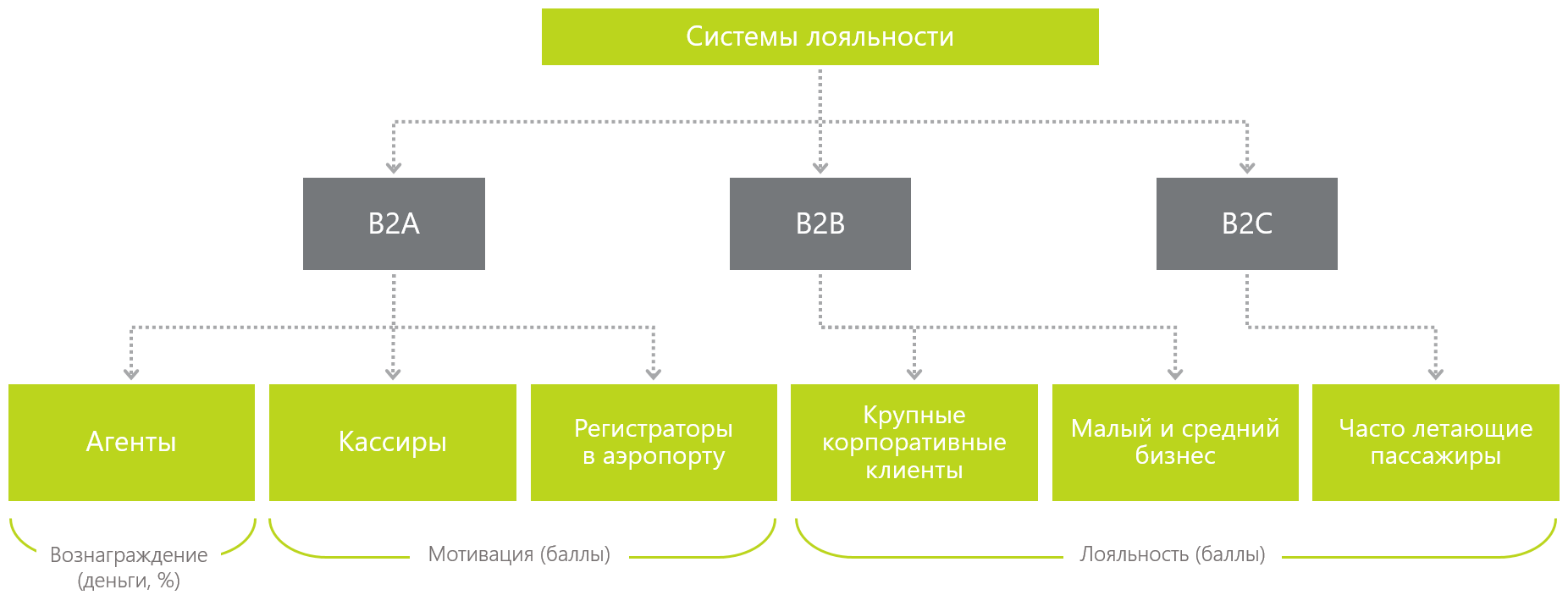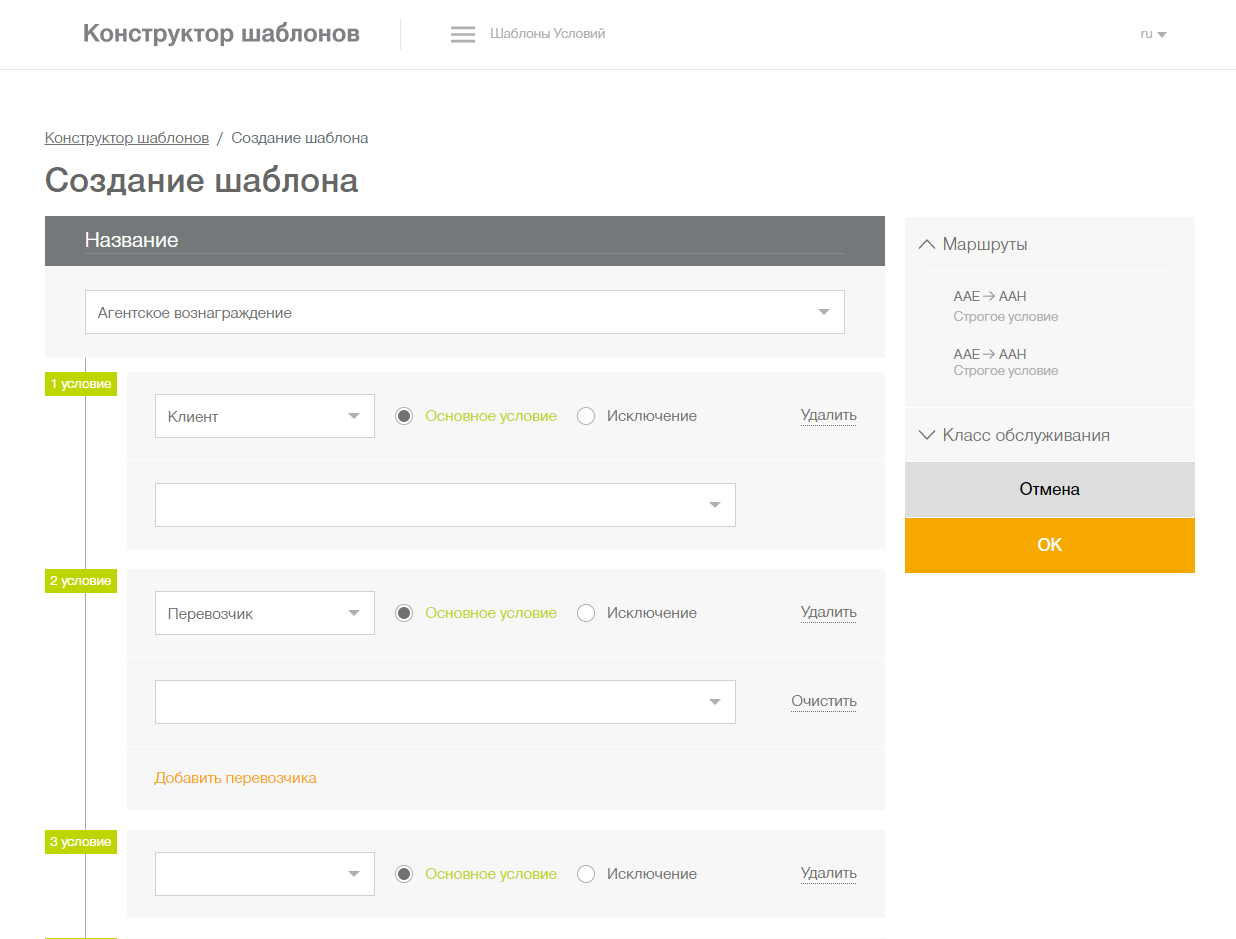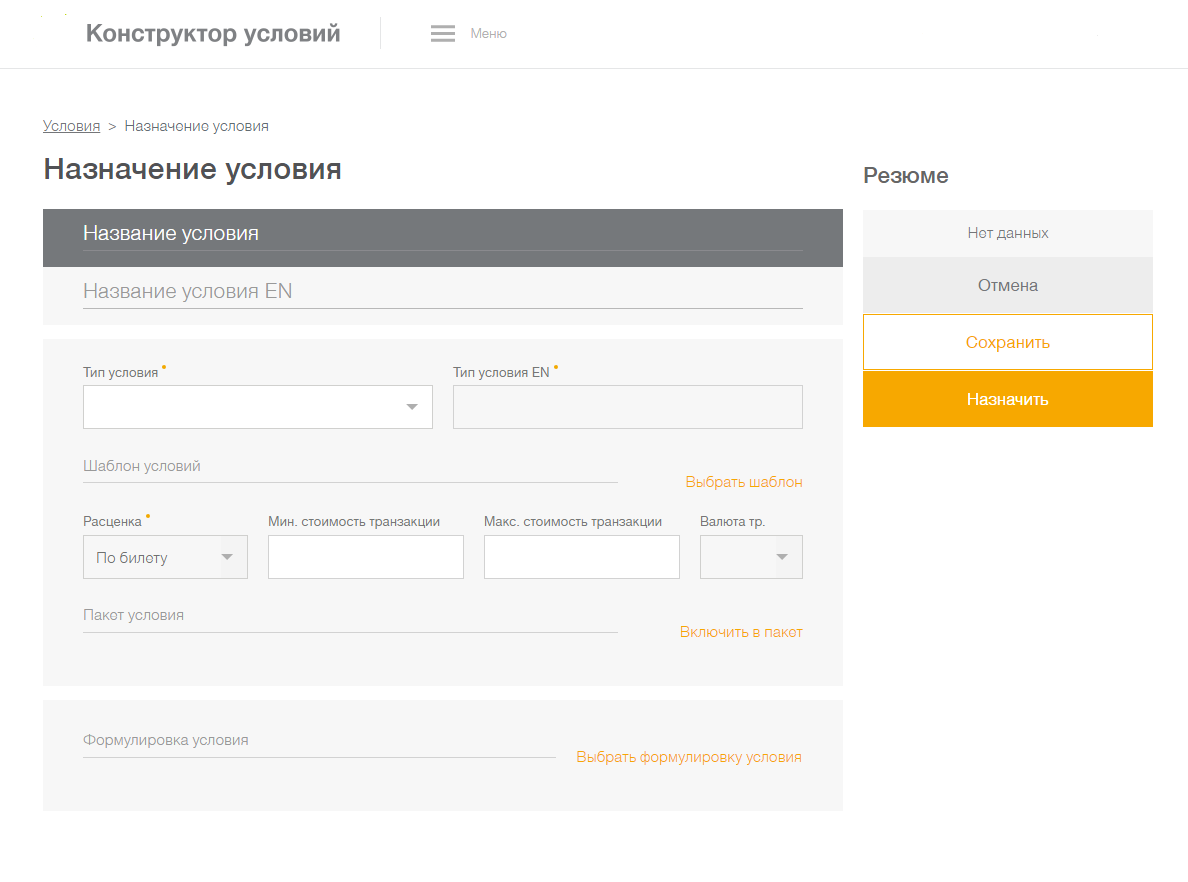Unified Scalable Remuneration System: Our Experience
Our most favorite airline sells tickets through a network of our own and independent agents and partners, cooperates with all market participants: agents, travel portals, tour operators. Clients are both individual travelers and corporate clients. To stimulate sales, the airline has several reward systems and loyalty programs for agents and customers. They appeared at different times, were initiated by different departments of the airline and the accounting for each program is independent.
As a result, it was rather problematic to get a summary of the costs and effectiveness of all loyalty systems, since This was done manually.

')
The introduction of uniform metrics and accounting rules made it possible not only to automate this process and get analytics in real time, but also to plan the development of individual loyalty tools taking into account the effectiveness of the system as a whole.
We have developed a reward conditions designer, essentially a billing system, which allows you to configure any condition for each program and calculate the overall economy of loyalty systems based on historical data on sales (or services rendered) for past periods.

The product is an algorithm for calculating remuneration and a web service (website) on which company managers can assign remuneration to partners or customers and calculate the economics of their decision based on historical data.
In order to create a condition constructor, we made an “absolute catalog” of the characteristics of the service - in fact, put the reward system “into atoms”.
And now from these "atoms" we can configure any reward.
The workplace of a specialist is now an automated portal.
So, our solution helped to bring together all the reward systems and loyalty programs and unified all settlement services, and the calculation of the model allows us to compare the cost of different conditions, and choose the most significant for the airline.
As a result, it was rather problematic to get a summary of the costs and effectiveness of all loyalty systems, since This was done manually.

')
The introduction of uniform metrics and accounting rules made it possible not only to automate this process and get analytics in real time, but also to plan the development of individual loyalty tools taking into account the effectiveness of the system as a whole.
We have developed a reward conditions designer, essentially a billing system, which allows you to configure any condition for each program and calculate the overall economy of loyalty systems based on historical data on sales (or services rendered) for past periods.

Condition constructor
The product is an algorithm for calculating remuneration and a web service (website) on which company managers can assign remuneration to partners or customers and calculate the economics of their decision based on historical data.
Algorithm
In order to create a condition constructor, we made an “absolute catalog” of the characteristics of the service - in fact, put the reward system “into atoms”.
- They identified the entire list of characteristics of the sale (services): roughly speaking, what type of transportation we sell, which agent sells, we sell offline or online, we transport ourselves or sell the transportation to another airline, etc. etc.
- Highlighted accrual strategies: we accrue an increased or decreased percentage, bonuses, or money.
- They defined how the rules can work: enable condition, exclude condition, set priority.
And now from these "atoms" we can configure any reward.
Web service
The workplace of a specialist is now an automated portal.
- On the Template Designer page, the specialist formulates a rule for calculating rewards. The correct form for creating a rule is already included in the template. And the possible options for filling the variable data - too. The specialist simply chooses from the list. At the final stage, the service verifies the parameters that the specialist sets for completeness and consistency, and saves.

- In the Remuneration Conditions Designer section, the specialist assigns (applies) a ready-made template to a partner or client, or a whole group.

- Functional model rendering
Before applying the condition, the specialist can calculate the estimated economics of the conditions that he sets on the archived data. - Application conditions
The condition constructor is directly connected to the airline's accounting system. In online mode, it reports current conditions for agents. And based on this information, the accounting system bills agents (or charges bonuses, in the case of loyalty systems). - Adding a new loyalty program
Now it does not matter how many loyalty programs exist in parallel to the company and whether new ones appear. Since the service (sale) is already decomposed into “atoms”, each new loyalty program simply involves a relevant set of characteristics and applies the necessary remuneration strategies. And the model continues to consider the overall economy of all loyalty systems.
So, our solution helped to bring together all the reward systems and loyalty programs and unified all settlement services, and the calculation of the model allows us to compare the cost of different conditions, and choose the most significant for the airline.
Source: https://habr.com/ru/post/354200/
All Articles